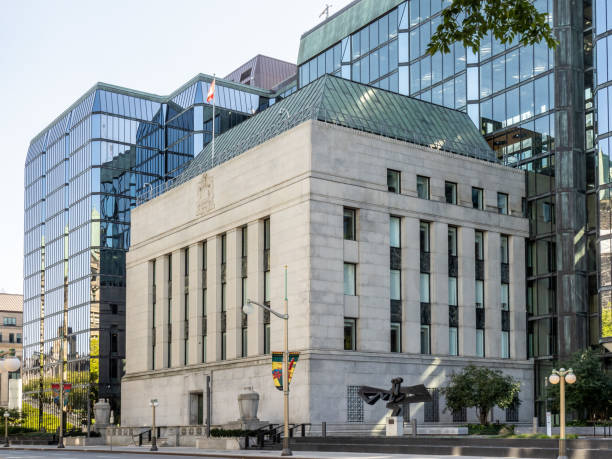BoC expected to hold rates at 5.0% after surprise fall in CPI
But persisting wage pressures mean future hike not off the table
Quarterly forecasts also eyed when decision is announced Wednesday, 12:30 GMT
No change in rates expected
The Bank of Canada looks set to keep its overnight rate unchanged at 5.0% at its October meeting amid more sluggish-than-expected growth and signs that inflation is cooling off again. Rates in Canada last went up in July when headline inflation had started to creep up following the rise in oil prices. But the effects from higher energy costs appear to be dissipating as the consumer price index increased by less than expected in August. For policymakers, however, their main focus is the underlying picture for inflation and the size of excess demand in the economy.
On these two fronts, there is plenty of reason for the BoC to keep its guard up as far as the risk to inflation is concerned. Two measures of core inflation – CPI trim and CPI median – have been somewhat flat in recent months. The other core metric – CPI common – has been steadily falling all year, although it has come under scrutiny lately for its reliability. Thus, it’s too early to be able to judge from the inflation data alone that price pressures are well and truly contained.
Strong jobs market is supporting consumers
Aside from the stickiness in core inflation, the other thing troubling the BoC is that excess demand remains too high. GDP growth may have moderated from the strong levels seen at the beginning of the year, but consumption has stayed fairly robust on the back of a tight labour market. Despite a slight uptick in the jobless rate, the Canadian economy has created more than 100k jobs over the past two months, and more importantly, wage growth has been picking up, which is supportive of household spending.
In the July Monetary Policy Report, the Bank didn’t seem to be worried about wage pressures, but this was before the last two sets of upbeat jobs numbers. It’s likely that policymakers won’t sound quite so placid about wage risks in the October report as wage growth accelerated to 5.3% y/y in September. The July forecasts also saw inflation hitting the Bank’s 2% target in 2025. If the October projections are revised higher and CPI is anticipated to take longer to fall to 2%, that would leave the option of further rate hikes firmly on the table.
Additional rate hike not seen until March 2024
However, if there will be another rate increase, traders think this would be some time away as they’ve priced in only a 10% probability for the October meeting and the biggest distribution (around 35%) for a 25-basis-point move is currently assigned for March 2024. As things stand, the softer-than-expected CPI report has bought the Bank of Canada some valuable time, allowing policymakers to assess the risks better amid the many uncertainties hanging over the outlook.
The recent outbreak of violence in the Middle East has cast a shadow over the global economy, while domestically, high household debt remains a concern. The housing market is another potential headwind as the mini rebound enjoyed during the Spring appears to be over and home prices have started to head south again.
Loonie unable to reap rewards of oil rally
Nevertheless, the balance for monetary policy seems to be tilted towards further tightening as the rally in crude oil is a boost not only for energy prices and inflation but also for Canada’s own oil exports. A hawkish hold is therefore the most likely outcome on Wednesday, and this could positively affect the Canadian dollar. In such a scenario, dollar/loonie could slip towards its 50-day moving average at 1.3584, with a test of the 1.3500 level possible if there is some added weakness in the greenback or a further spike in oil prices. However, if there is no tweak in the BoC’s language, dollar/loonie could edge up towards the October 5 top of 1.3785, which would then turn attention to the March 10 high of 1.3861.
It’s worth noting, though, that the loonie’s positive correlation with oil prices is sketchy at best and the relationship has been broken since late July. A more hawkish Fed is partly to blame for this, but the other factor is the increased risk aversion in the markets, which tends to work against risk-sensitive currencies like the loonie.
